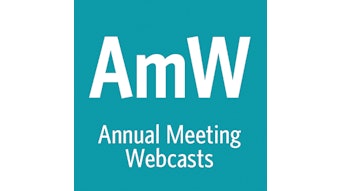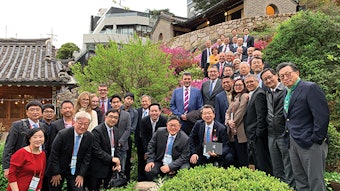Tonsils, adenoids, and long term immune function
In this Bulletin segment, the AAO-HNSF Outcomes Research and Evidence-Based Medicine (OREBM) Committee shares highlights and accompanying commentary from a 2018 article titled “Association of Long-term Risk of Respiratory, Allergic, and Infectious Diseases With Removal of Adenoids and Tonsils in Childhood” by Byars et al.
OUT OF COMMITTEE: OUTCOMES RESEARCH AND EVIDENCE-BASED MEDICINE COMMITTEE
Derek J. Lam MD, MPH;
Marco Antonio Figueroa Morales, MD, MSc;
Vikas Mehta, MD, MPH;
Joshua R. Bedwell, MD
In this Bulletin segment, the AAO-HNSF Outcomes Research and Evidence-Based Medicine (OREBM) Committee shares highlights and accompanying commentary from a 2018 article titled “Association of Long-term Risk of Respiratory, Allergic, and Infectious Diseases With Removal of Adenoids and Tonsils in Childhood” by Byars et al.1
For years, we have counseled parents preoperatively that, while the tonsils and adenoids are part of the immune system, removing them does not seem to make a significant difference to long-term immune function. However, a recent study by Byars et al. calls this routine reassurance into question.
“These are all compelling reasons to be somewhat skeptical of the findings presented and to question their generalizability beyond the study population. Nevertheless, it is certainly a provocative and well executed study that may add some nuance to how we counsel parents when this all-too-common question comes up.”
A review of the literature shows that our standard preoperative education was generally well-supported. There have been many prior investigations into the relationship between tonsillectomy and immune function. Most studies have focused on short- to medium-term evaluations of humoral immunity. Fewer have looked at changes in cellular immunity. A 2015 systemic review by Bitar included 35 articles spanning from 1971-2014, with a sample size of nearly 2000 patients.2 Despite heterogeneity in study design (control group versus no, comparison of preoperative versus postoperative levels) and ages of patients that were included, some general themes emerged. Most studies showed no decrease, or an insignificant one, in immunoglobulin levels. However, three of the studies that compared surgical patients to controls did find significant negative alterations.3–5
One study looked specifically at susceptibility to upper respiratory illness and changes in humoral and cellular immunity following tonsillectomy and found some minor alterations in IgA levels and lymphocyte populations but no increase in upper respiratory tract illnesses.6 None of the studies on cellular immunity demonstrated a negative effect, and many showed improvement after surgery. The review authors concluded that the weight of evidence suggests that there was no negative effect of tonsillectomy on immune function.
The Byars study takes a novel approach, focusing on clinical outcomes rather than immunologic assays. Their population-based cohort study examined almost 1.2 million Danish individuals born between 1979 and 1999. Using linked national registries, the authors compared the incidence of 28 diseases between 10 and 30 years of life in over 60,000 healthy children who had their tonsils, adenoids, or both removed in the first nine years of life (cases) to those who did not (controls). In particular, they focused on infectious, respiratory, and allergic disease. After controlling for the other available significant variables, they found that tonsillectomy was associated with a nearly three-fold increase in risk of an upper respiratory tract disease later in life. Adenoidectomy was associated with a roughly two-fold increase in the risk of chronic obstructive pulmonary disorder and upper respiratory tract disease (RR 2.72 95 percent CI 1.54-4.80 and RR 1.99 95 percent CI 1.51-2.63 and respectively), while adenotonsillectomy was associated with a 17 percent increased risk of infectious diseases (RR 1.17. 95 percent CI 1.10-1.25). Across all 28 disease groups, removal of tonsils or adenoids resulted in increases in relative risk for 78 percent of them, suggesting a significant perturbation in immune system development with the potential to impact a wide range of organ systems.
Though there are myriad confounders that could not be measured in such a large population-based database study, the authors did attempt to adjust for many potential ones. They combined several different national registries to compile comprehensive health and socioeconomic histories for all individuals included in the analysis. Covariates included maternal, birth-related, demographic, and socioeconomic risk factors. The authors concluded that the risks of multiple diseases later in life, including respiratory and infectious diseases, are significantly increased after removal of tonsils or adenoids, and that the benefits of these surgeries tend to be short-term, while potential long-term benefits are mixed.
In the accompanying commentary, Richard M. Rosenfeld, MD MPH, MBA,7 points out there are several potential sources of biases that could distort the relationships the authors assessed. These include
1) unmeasured confounding variables such as cigarette smoke exposure and antibiotic use,
2) reverse causation, where an underlying condition like asthma might lead to more frequent healthcare exposure and therefore more opportunity to be diagnosed with related conditions leading to surgery,
3) selection bias, where there are important known or unknown differences in baseline characteristics in the two groups that could influence later outcomes, and
4) measurement bias, where inaccurate or inconsistent coding could introduce unknown bias to the data. These are all compelling reasons to be somewhat skeptical of the findings presented and to question their generalizability beyond the study population. Nevertheless, it is certainly a provocative and well-executed study that may add some nuance to how we counsel parents when this all-too-common question comes up.
References:
- Byars SG, Stearns SC, Boomsma JJ. Association of long-term risk of respiratory, allergic, and infectious diseases with removal of adenoids and tonsils in childhood. JAMA Otolaryngol – Head Neck Surg. 2018;144(7):594-603. doi:10.1001/jamaoto.2018.0614
- Bitar MA, Dowli A, Mourad M. The effect of tonsillectomy on the immune system: A systematic review and meta-analysis. Int J Pediatr Otorhinolaryngol. 2015;79(8):1184-1191. doi:10.1016/j.ijporl.2015.05.016
- Ogra PL. Effect of Tonsillectomy and Adenoidectomy on Nasopharyngeal Antibody Response to Poliovirus. N Engl J Med. 2010. doi:10.1056/nejm197101142840201
- Cantani A, Bellioni P, Salvinelli F, Businco L. Serum immunoglobulins and secretory IgA deficiency in tonsillectomized children. Ann Allergy. 1986;57(6):413-416.
- Ostergaard PA. IgA levels and carrier rate of pathogenic bacteria in 27 children previously tonsillectomized. Acta Pathol Microbiol Scand C. 1977;85(3):178-186.
- Bock A, Popp W, Herkner KR. Tonsillectomy and the immune system: a long-term follow up comparison between tonsillectomized and non-tonsillectomized children. Eur Arch Otorhinolaryngol. 1994;251(7):423-427.
- Rosenfeld RM. Old barbers, young doctors, and tonsillectomy. JAMA Otolaryngol – Head Neck Surg. 2018;144(7):603-604. doi:10.1001/jamaoto.2018.0622
- Melbourne U of. Tonsil and adenoid removal associated with respiratory, allergic and infectious disease. Science Daily.















